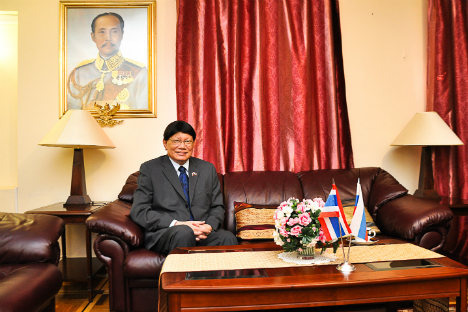$70 mln Russian-Chinese satellite project will monitor life in major cities

The Chinese investment fund signed an agreement with the Russian space technology company. Source: Press photo
The Chinese investment fund, Cybernaut, signed an agreement with the Russian space technology company, Dauria Aerospace, to invest $70 million to develop 10 satellites as part of the Urban Observer project to conduct daily imaging of the world's 100 largest cities with an accuracy of 0.7 meters per pixel. A joint venture will be created in Hong Kong.
The satellite imagery could be used for a new Silk Road – an international trade route that stretches from Shanghai and Beijing through Xinjiang to Kazakhstan, Pakistan, and Afghanistan, before finally snaking into Central and Western Europe.
"At the moment, it's not possible to closely monitor the main activities in these cities, which includes industrial, mining and transport infrastructure,'' said Sergey Ivanov, CEO and co-founder of Dauria Aerospace. "Urban Observer can play a vital role in the development of Chinese-Russian infrastructure projects.''
Satellites will monitor cities, forests, and farmland, and the resolution will be high enough to allow satellites to analyze traffic. Dauria is currently developing a high-resolution micro-satellite, Auriga, which will be launched in 2017. It will be a prototype for Auriga HD, which will form the Urban Observer group.
According to Alexey Belyakov, executive director of the space technologies and telecommunications cluster at the Skolkovo center that gave $5 million to the development of Dauria’s micro-satellite platform, the project will evaluate the development of the Silk Road's infrastructure. This includes the size of the populations, as well as the pace and quality of construction.
Belyakov said that Urban Observer will also allow Russia and China to enter the global market of satellite imagery. "While the main customers are in China, our satellites will cover the whole world,'' said Belyakov. "Currently, U.S. companies, such as Digital Globe, are the leaders in satellite imagery, but the market is growing. Recently, the U.S. Congress authorized commercial satellite imagery, and Russia also simplified access to information from satellites."
According to Belyakov, Urban Observer can help develop commercial products, including opportunities for energy companies and mobile apps developers.
In addition to private space projects, Russia and China are discussing cooperation on a lunar program, such as the establishment of a Chinese lunar rover. Russia’s deputy prime minister, Dmitry Rogozin, announced this on October 12 following talks with Chinese vice premier, Wang Yang.
The Chinese investment fund, Cybernaut, signed an agreement with the Russian space technology company, Dauria Aerospace, to invest $70 million to develop 10 satellites as part of the Urban Observer project to conduct daily imaging of the world's 100 largest cities with an accuracy of 0.7 meters per pixel.
The satellite imagery could be used for a new Silk Road – an international trade route that stretches from Shanghai and Beijing through Xinjiang to Kazakhstan, Pakistan, and Afghanistan, before finally snaking into Central and Western Europe.'
"At the moment, it's not possible to closely monitor the main activities in these cities, which includes industrial, mining and transport infrastructure,'' said Sergey Ivanov, CEO and co-founder of Dauria Aerospace. ``Urban Observer can play a vital role in the development of Chinese-Russian infrastructure projects.''
Satellites will monitor cities, forests, and farmland, and the resolution will be high enough to allow satellites to analyze traffic. Dauria is currently developing a high-resolution micro-satellite, Auriga, which will be launched in 2017. It will be a prototype for Auriga HD, which will form the Urban Observer group.
According to Alexey Belyakov, executive director of the space technologies and telecommunications cluster at the Skolkovo center that gave $5 million to the development of Dauria’s micro-satellite platform, the project will monitor and evaluate the development of the Silk Road's infrastructure. This includes the size of the populations, as well as the pace and quality of construction.
Belyakov said that Urban Observer will also allow Russia and China to enter the global market of satellite imagery. "While the main customers are in China, our satellites will cover the whole world,'' said Belyakov. "Currently, U.S. companies, such as Digital Globe, are the leaders in satellite imagery, but the market is growing. Recently, the U.S. Congress authorized commercial satellite imagery, and Russia also simplified access to information from satellites."
All rights reserved by Rossiyskaya Gazeta.
Subscribe
to our newsletter!
Get the week's best stories straight to your inbox


